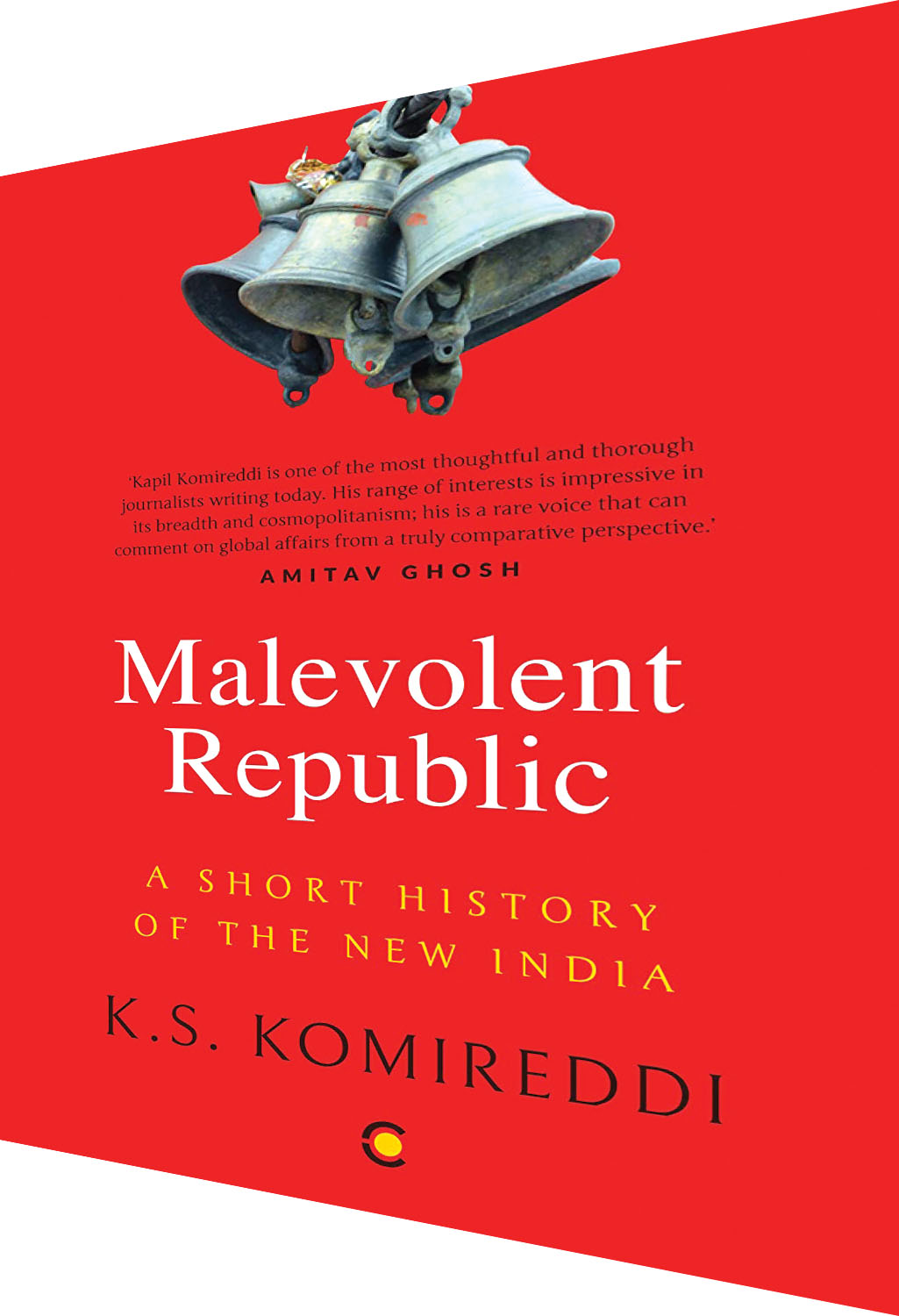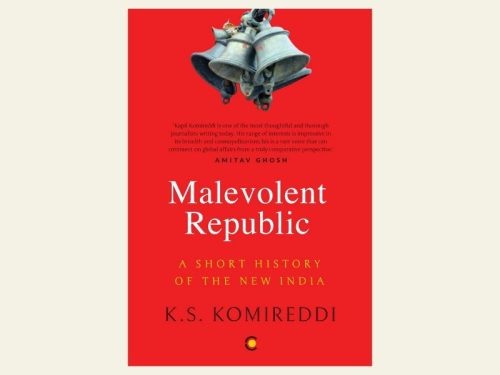Decline & fall elegy – Malevolent Republic: A Short History of the New India
 Malevolent Republic: A Short History of the New India; K.S. Komireddi; HURST; Rs.314; Pages 224
Malevolent Republic: A Short History of the New India; K.S. Komireddi; HURST; Rs.314; Pages 224
In 1964, Rajni Kothari wrote about the unique nature of the Indian party system describing it as a “one-party dominance” characterised by the existence of a multiparty system dominated by one party, the Indian national congress. It was an umbrella organisation extending its ideology to other parties, internalising and absorbing dissent within and without its ranks, and, effectively being the only viable national political option for millions of voters.
However, while Kothari was intrigued by the operation of the congress as a party, he was also acutely aware of how the dominance he referred to was extended to other areas as well. In the 1960s the congress, the self-appointed heir to the mantle of governance after independence, also influenced the framing of the constitution, built institutions, staffed them with yes-men, initiated coercive counter-insurgency in areas which saw local resistance, annexed Sikkim, Goa, Hyderabad and managed to arm twist the ruler of Kashmir, Hari Singh, into signing the Instrument of accession which legally bound Kashmir to India. the party reneged on promises of plebiscites in Kashmir and nagaland and didn’t think twice about strafe bombing Aizawl to defeat the Mizo national front. It won election after election, got embroiled in numerous scams, imposed the emergency, rewarded compliant men and women, and played around with the presidency and president’s rule.
And yet, the Indian public repeatedly rewarded it. Why? Kapil Komireddi’s book Malevolent Republic: A Short History of the New India is an eye-opener. He believes that one reason the congress was vehemently defended and propped up by public intellectuals was because of its almost fundamentalist commitment to the idea of a secular India. this commitment was the prime factor that shielded the congress from harsh criticism from liberals.
Malevolent Republic: A Short History of the New India is a catalogue of what went wrong in India under congress rule and how that paved the way for the mephitic political institutionalisation of the BJP. Komireddi writes: ‘they (congress politicians) thought of themselves as modern democrats, but oligarchy was the condition of their supremacy. only strongmen, the British had suggested, could bring order to India. congress internalised that lesson.”
However, the BJP alternative doesn’t have any redeeming features. If congress was tied to secularism, which Komireddi argues is a non-negotiable essential condition for the unity of India, the BJP’s reactionary alternative has moved as far away as possible from that ideal.
It argues that secularism was inserted into the preamble without debate, how minorities could live in fear not as equals but only if they acknowledge the superiority and dominance of the majority Hindu community. after decades of being forced to follow a concept that only college-educated graduates understood, this political expression of baser ascriptive instincts became something that mobilised core constituencies in the Hindi heartland.
Attempts to inspissate Hindutva ideology brought repeated rounds of communal violence. If congress was squarely to blame for the 1984 anti-Sikh riots, demolition of the Babri mosque in 1992, post-Godhra riots in Gujarat in 2002, the riots in Muzaffarnagar in 2013 and the seemingly otiose and sporadic lynchings, are all part of a pattern to dominate the public sphere and saturate the minds of Hindus with ill-placed pride, and infuse the minds of non-Hindus with well-placed fear.
The boffo performance of the BJP in 2014 and again in 2019, its complete dominance of institutions of state and public and its control over the Indian media stand testimony to the fact that it had learnt much from the congress playbook.
Komireddi’s effort in Malevolent Republic is not to complain, but to awaken. His text is deeply critical not only of the Modi regime, but also of what made it possible. unlike other commentators on this issue, he does not absolve the congress of blame.
In fact, he subtly suggests that much of what is being seen in India today was set in motion before the BJP became strident politically. If Rajiv Gandhi rolled back secularism to increase the congress’ appeal to Muslim voters, then Narendra Modi simply doubled down on that impulse. He writes: “asked in 2014 if he felt any sorrow for the death of Muslims in 2002, Modi replied: if ‘someone else is driving a car and we’re sitting behind, if a puppy comes under the wheel, will it be painful or not?”
This analogy outraged liberal commentators in Delhi. yet hardly anybody seemed to recall that Modi was only echoing the phrase used by Rajiv’s government to explain the outbreak of violence against Sikhs: ‘even when a baby or a cow is killed in an accident, the anguish of the mob is discernible’.
The book is a disquisition that holds India’s various governments to account; it is also a work that explains how the cracks in the scaffolding of the Indian state were identified and used to build the BJP system. If congress at one time was cosy with Indian news agencies, Modi made the media genuflect. He writes: “Indira Gandhi shackled the press. Modi co-opted it”. If the congress revised Indian history, so did the right wing. If the congress enacted economic reforms without a parliamentary debate (that happened post hoc), the BJP enacted demonetisation without debate. If the congress built universities to articulate a specific ideology, so did the BJP.
Komireddi possesses an innate and instinctive, clear-eyed gaze on India. He is articulating critiques and dissensions that often liven up Indian living rooms. this book explains that Indian democracy has become so vacuous that hate, the emotion that once lurked on the fringes of society, has flown in to fill the vacuum. Hate is in. It is mainstream. and for Komireddi, this has happened because those secular stalwarts who had the duty to protect democratic institutions in the country, failed to see that institutions cannot be purposefully hollowed out by nepotism, corruption and repeated assaults, if they are to stand the test of time.
Vasundhara Sirnate Drennan (The Book Review, March)

















Add comment